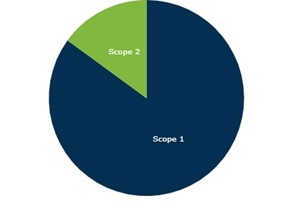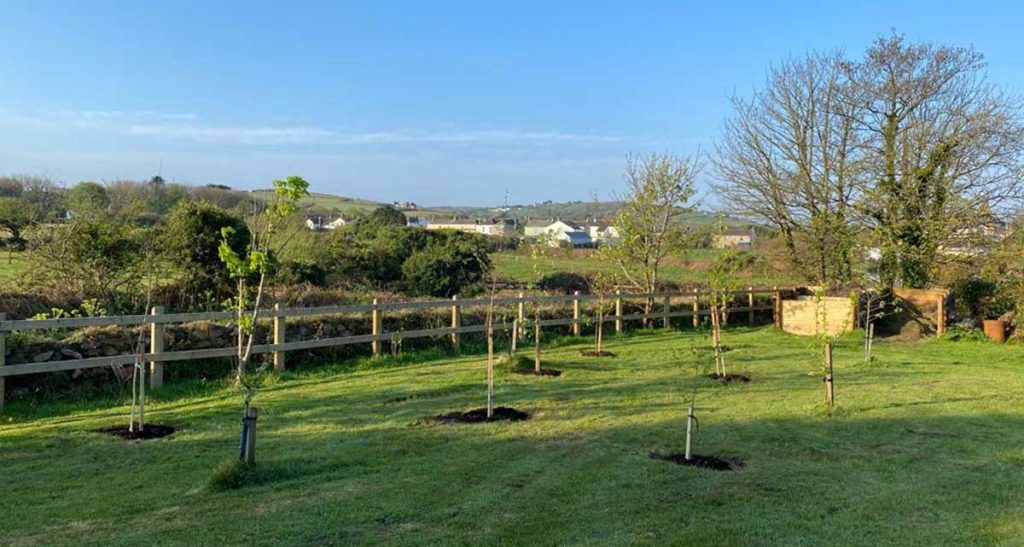Our society is releasing greenhouse gases, especially carbon dioxide (CO2), that are warming the Earth’s climate to levels we have never experienced before. As a result the great ice sheets are melting, contributing to rising seas, and extreme weather events like hurricanes and droughts are becoming more severe and frequent.
The science shows that in order to avert the worst impacts of climate change and preserve a liveable planet, global temperature increase needs to be limited to 1.5°C above pre-industrial levels. Currently, the Earth is already about 1.1°C warmer than it was in the late 1800s, and emissions continue to rise. To keep global warming to no more than 1.5°C (as called for in the Paris Agreement ) emissions need to be reduced by 45% by 2030 and reach net zero by 2050.
Put simply, net zero means cutting greenhouse gas emissions to as close to zero as possible, with any remaining emissions re-absorbed from the atmosphere, by oceans and forests for instance. To achieve this calls for nothing less than a complete transformation of how we produce, consume, and move about.
And this needs to be done not just on an international, national or local level, but also on a micro level, with each of us taking individual responsibility for our emissions.
Calculating our business carbon footprint
Using the Carbon Trust’s Carbon Footprint Calculator we calculated the carbon footprint of CMI Synergy. Designed to help UK based SMEs measure their corporate emission footprint by following GHG Protocol Guidance the calculations include direct emissions from fuel and processes (Scope 1 emissions) and emissions from purchased electricity (or Scope 2 emissions) for the assets they operate, and help you understand the carbon footprint performance of your company’s site.
Results for 2021
Total emissions (kgCO2e): 2,748
Scope 1: 85%
Scope 2: 15%
Our results are a worst case scenario as we had some energy data missing due to changes in supplier. We are aiming to refine this over the next 12 months by getting more accurate data over 2022 which combined with the changes we will be making, should enable us to bring our results down appreciably.
Offsetting through tree-planting
As trees grow they pull in CO2 through their leaves and convert it into carbohydrates, which they use to grow. So long as a tree lives, that carbon stays within it – and trees can live for decades or centuries. Trees are therefore a natural ‘carbon sink’.
Trees for life suggest that one tree can offset 0.16 tonnes of CO2 so we will have committed to buy and plant 18 trees to offset our carbon emissions.
Protecting existing forests and planting new ones are undoubtedly good things to do. However, whilst trees will definitely help us slow climate change, they won’t reverse it on their own…
Planes, trains and automobiles
Commuter journeys make up 15% of all journeys in the UK, second only to shopping! During lockdown the overall carbon emissions from commuting fell to approximately 30-38% of what they had been before lockdown. In early 2021 52% of UK workers were working from home and of those surveyed 90% said that they wanted to continue to do so in some capacity after restrictions had ended.
With much of our time spent in lockdown and travel greatly restricted, in 2020-21 as a company we travelled a total of just 550 miles (a huge reduction compared to the 32,000 miles travelled in 2019-20). With the vast majority of restrictions now lifted the opportunity to travel for work is once again available. The pandemic has shown that may tasks can be carried out remotely and we will continue do make use of the technology that enables that. However the nature of our business is one that requires our consultants to spend time with clients face-to-face and, visit various sites for assessments. Combined with us working throughout the UK, a certain amount of travel has been – and will continue to be – a necessity.
Therefore if travel is still a necessity and as we aren’t leaving Cornwall any time soon but still want to reduce our carbon impact we have to look at how we travel.
On occasions we have flown from Exeter and at other times have boarded the exotically named ‘Night Riviera’ overnight sleeper train to London. It’s relatively inexpensive, requires no change and in theory, leaves you fresh when you arrive at just after six in the morning. It does though involve seven hours on a train and, arriving at Paddington just after 6am can leave you twiddling your thumbs for a few hours if your final destination isn’t too far.
‘Driving’ change in commuting
Driving gives you control over your departure times, allows you to make changes en route and, provides instant transport if you need to visit multiple sites when away. but clearly fossil fuel powered cars can’t be part of the equation.
The last decade has seen the number of alternative-fuelled cars on our roads grow steadily, and the government’s 2017 announcement that the sale of new petrol and diesel cars will be banned from 2040 has spurred further growth.
Typically combining a conventional combustion engine (usually petrol-powered) with an electric motor, the combustion engine in a hybrid charges the car’s batteries, with the electric motor usually kicking in when extra power is needed, such as during acceleration.
Cars use the most fuel when you’ve got your foot on the floor increasing speed, so using an electric motor to help the combustion engine makes cars more efficient.
What’s more on most models, the batteries are recharged by collecting wasted energy from elsewhere such as during braking, where the kinetic energy released during braking is captured and used to charge the batteries. The engine also shuts down automatically when this occurs, saving fuel and cutting emissions.
So this is the change we are making. We now hire work cars and where possible they are hybrid. This means we now have one less car and can choose what vehicle best suits the journey we are undertaking. Our most recent trip was in a hybrid which, as well as being a very smooth drive with a much lower carbon footprint, also saved us about £60 in ‘fuel’. A win-win.
If you’d like to know more about your carbon footprint, visit the Carbon Trust’s Guide to organisational carbon footprinting.
Sources: Decarbon8, RAC, UN climate change, Carbon Trust.

